Introduction
B2B e-commerce has become the driving force behind modern commerce, reshaping the mechanics of trade and transcending traditional boundaries. In this era of digital business models and global product development, understanding the key elements of B2B e-commerce is crucial for businesses aiming to navigate and lead in the competitive world of digital trade. Leveraging a digital platform that aligns with your business ambitions can catalyze expansion and solve the challenges of growth.
This article explores the benefits of customized B2B e-commerce development, the importance of identifying the target audience, setting SMART goals, determining key performance indicators (KPIs), choosing the right content formats, selecting content channels, budgeting for content creation, creating a content publishing schedule, leveraging AI in content creation and distribution, and analyzing and measuring results. By following these strategies and staying attuned to the rapidly evolving technological landscape, businesses can position themselves for success in the dynamic B2B digital landscape.
Understanding B2B E-commerce
B2B e-commerce serves as the digital pulse behind the complex interplay between businesses, facilitating transactions among a myriad of participants including manufacturers, wholesalers, retailers, and others. It's the essence of modern commerce, where data drives decisions and AI reshapes the mechanics of trade, envisioning growth that transcends traditional boundaries. At the cornerstone of this new age is the AI-enabled machine-to-machine commerce that weaves into the fabric of B2B transactions, projecting an evolution spurred on by digital business models and global product development.
The shift towards such an interconnected marketplace isn't merely a matter of logistics or technology, but one deeply rooted in political and cultural contexts, brewing a generational change in B2B buying behavior.
Leveraging a digital platform that echoes your business ambitions, like the ones showcased by firms such as Lemonaid Health or those highlighted in the triumphs of the Great Indian Festival sale, can catalyze expansion and solve the 'how do we grow?' conundrum. By crafting experiences that address customer challenges and streamline their journey beyond the single event of purchase, businesses can harness the potential for unprecedented growth.
As we dive deeper into the stories of entrepreneurs on platforms like Flipkart, where innovation nurtures success, we see a reflection of a digital economy that's diversifying and encompassing more than just e-commerce. It's redefining the B2B landscape in manufacturing and distribution industries which have already witnessed a monumental digital shift. This innovation isn't just a narrative; it's quantified in the fabric of multifaceted statistics that describe a thriving digital economy, segmented into infrastructure, e-commerce, and priced digital services.
In essence, understanding and engaging with the key elements of B2B e-commerce is a decisive factor for businesses aiming to navigate and lead in the competitive waters of digital trade. It propels them towards leveraging comprehensive commerce platforms that spell the difference between stagnation and exponential growth.
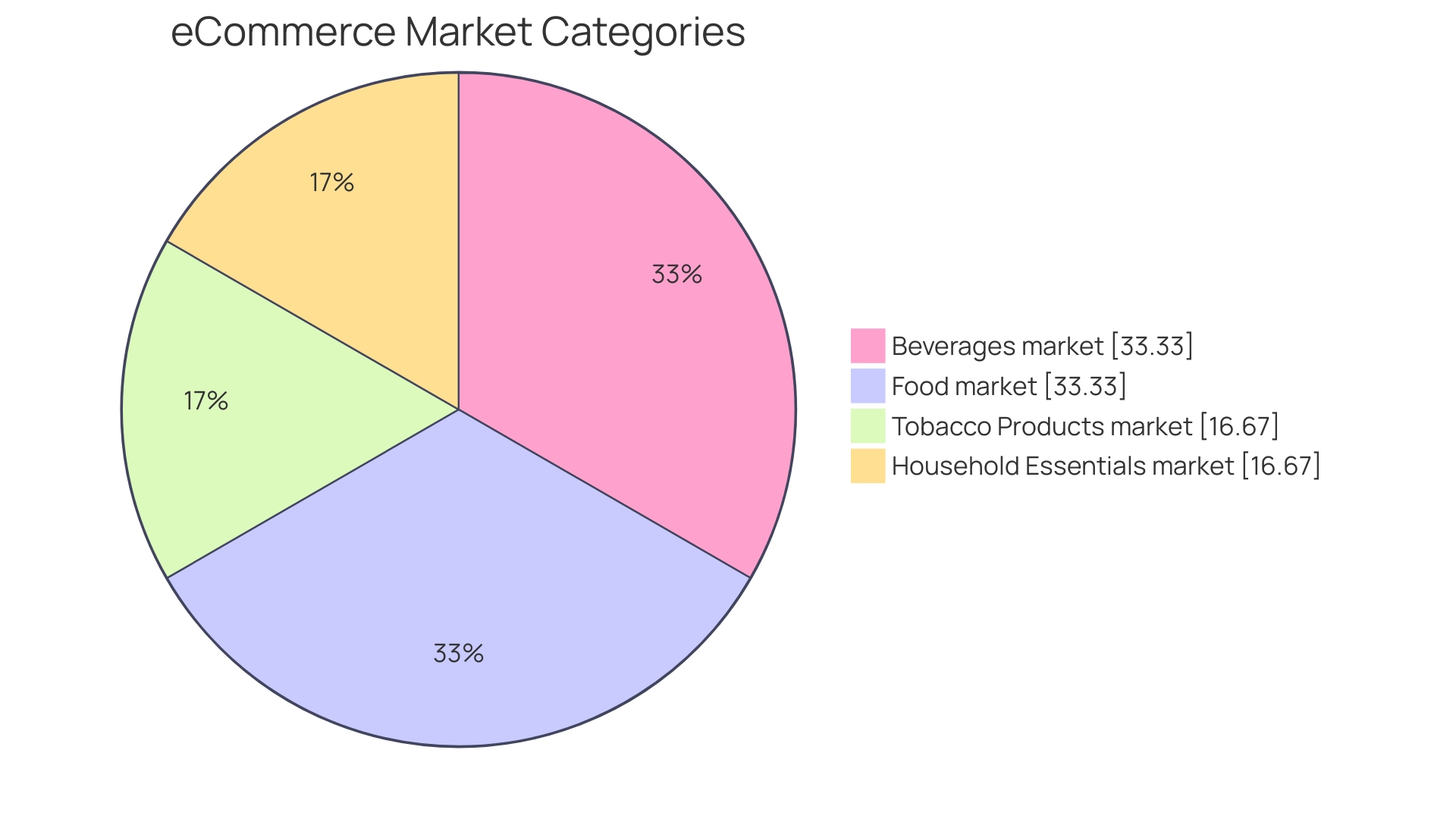
Benefits of Customized B2B E-commerce Development
Optimizing your B2B e-commerce platform is not only about embracing the latest technology but also involves tailoring the online experience to cater to your customer's specific needs. Engaging a professional eCommerce website development firm allows you to design a robust platform that not only differentiates you from the competition but also simplifies the purchasing process for your clients, especially during crucial stages like checkout, ensuring it is free from hiccups.
A bespoke e-commerce site, unconstrained by platform-specific limitations, grants you total control—from the web design that mirrors your brand identity to the strategic placement of content, ensuring search engines index your offerings with ease. Crafted rightly, your website is not just a channel but becomes an integral part of your value proposition to your customers.
Moreover, with rapid technological advances and shifts in consumer behavior, investing in custom development is crucial for delivering speed and efficiency in the user experience. According to industry insights, as the B2B e-commerce market is projected to swell by $1 trillion in the coming years, agility in website performance is becoming increasingly significant. Customized e-commerce development is not just a decision for today; it's preparation for scaling your business to meet the advancing market demands, supporting your sustained growth trajectory.
Case Study: Enhancing Business Growth
As AI continues to revolutionize industries, e-commerce has not been left behind. A European fashion and lifestyle platform has been at the forefront of this transformation by employing AI and machine learning technologies to automate and enhance the description and categorization of their extensive product offerings. With around two million product images, using AI to create detailed tags not only improved the user experience but also significantly optimized search result quality, proving crucial for an engaging and personalized shopping journey.
Predictive analytics based on AI algorithms have allowed more accurate inventory stocking, effectively minimizing overstocks or stockouts, which are a common problem in retail. By embracing AI for demand forecasting with tools like Blue Yonder, retailers can now rely on historical sales patterns to make informed stocking decisions.
This strategic integration of AI has led to remarkable business growth for the platform, with tangible results such as a substantial increase in revenue by 11% or more for 76% of e-commerce decision-makers deploying AI. Moreover, investing in AI has not only enhanced customer support, search, and recommendations but also encouraged automation, showing significant sales increases across online stores. A key takeaway from this innovative journey is that Ai's capability to understand and anticipate customer preferences has indeed led to heightened customer satisfaction and loyalty, proving that strategic AI implementation in e-commerce is not just a theoretical ideal but a commercial imperative for sustained growth.
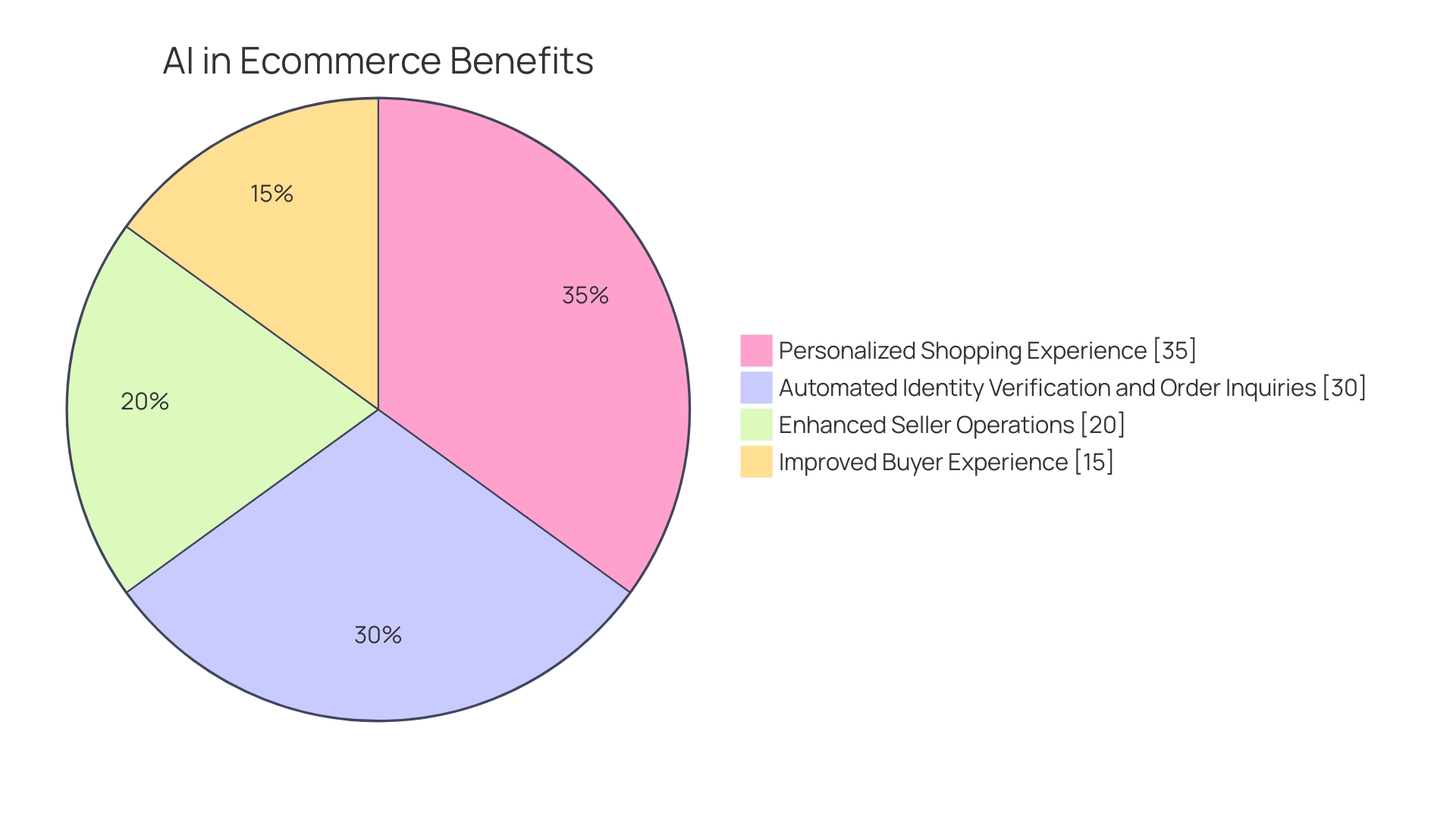
Identifying the Target Audience
Identifying and understanding the target audience is not just the launching pad, but the very axis around which a successful e-commerce development project revolves. Market research, customer data, and pinpointed audience segmentation empower businesses to craft an e-commerce experience that feels tailor-made. Insights like those from Numerator, which reveal demographic patterns among shoppers at leading retail brands, can inform a laser-focused strategy.
A case in point is the Equinox fitness brand, standing strong in the hyper-competitive fitness industry by defining its niche, diversifying its services, and employing a strategic expansion. Equinox's trajectory offers a playbook on evolving with consumer trends and remaining a leader over time.
Armed with data from Numerator's million-plus U.S. consumers and guided by the lessons learned from brands that have successfully navigated complex and competitive markets, businesses can hone in on their ideal customer profile (ICP). This isn't about limiting your scope, but about embracing the clarity that comes from specificity—like a retargeting pixel quietly capturing the digital footprint of a website visitor to later curate a more relevant return visit. This approach is solidified by leveraging industry KPIs and understanding that conversion rates are not universal metrics but must be contextualized to be meaningful, ensuring efforts in customer-oriented retargeting are accurately evaluated and employed efficaciously.
An informed strategy, underpinned by rich data and innovative examples, allows e-commerce platforms to not only personalize shopping experiences but to blaze trails into new markets and opportunities, plain and simple.
Setting SMART Goals
Embracing the SMART (Specific, Measurable, Achievable, Relevant, Time-bound) methodology for defining goals is essential for e-commerce ventures aiming at laser-focused success milestones. Achieving precise objectives not only steers the team's collective efforts but also ensures that resources are optimally deployed. For example, having a deep understanding of your product catalog—as demonstrated by Wayfair using machine learning to analyze over 40 million products—can be a SMART goal that contributes to better search relevance and customer satisfaction.
Quantifiable improvements to be pursued might include heightened sales figures, superior customer satisfaction scores, or elevated market reach. These well-defined ambitions serve as stepping stones to success, facilitating the vital measurement of the impact arising from bespoke advancements in B2B e-commerce platforms. Moreover, as e-commerce continues to adapt to consumer needs, future-forward elements such as cryptocurrency payments and more robust AI-supported shopping experiences will likely integrate into these strategic objectives, ultimately augmenting the personalized nature and success potential of online retail endeavors.
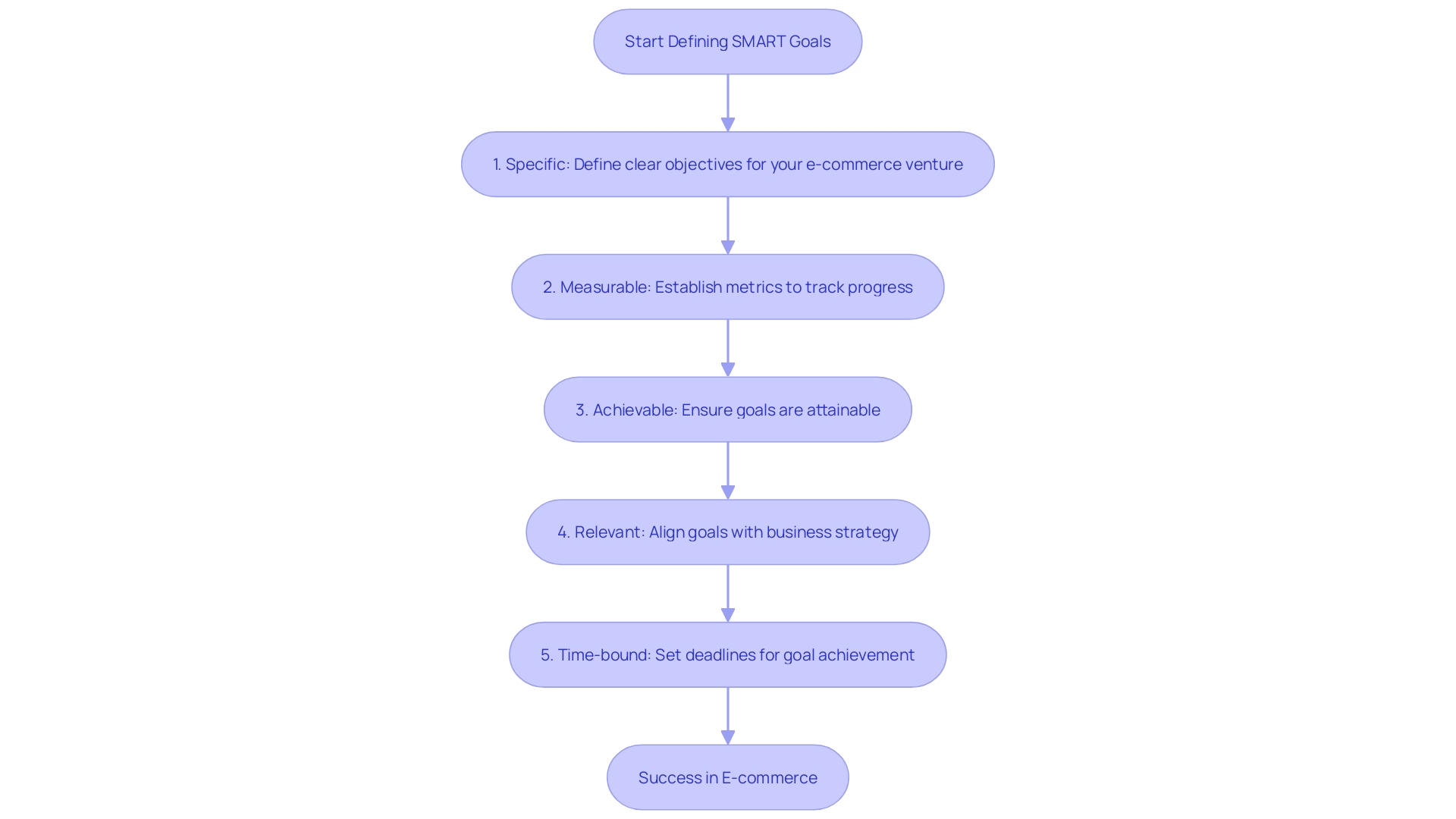
Determining Key Performance Indicators (KPIs)
Effectively monitoring and refining your business performance is essential, and Key Performance Indicators (KPIs) are the compass that can guide a B2B e-commerce platform towards a path of continuous improvement and success. Essential KPIs such as conversion rate, average order value, customer retention rate, and satisfaction scores provide a quantifiable measure of your platform's health and the value it delivers to users.
To stay competitive and make data-backed decisions, gathering insights from these KPIs is a non-negotiable aspect of managing an e-commerce platform. For example, Zara's extensive use of AI and smart supply chain management allows for a transparent view of the metrics at every point of the process, leading to swift adjustments in strategy and operations, an approach that could be mirrored in B2B platforms.
In the fast-expanding ecosystem of e-commerce—a sphere witnessing explosive growth with an array of industries from retail to hospitality joining the fray—it's clear that informed decision-making grounded in solid data analytics sets the stage for increased sales and satisfied customers. This is evident as well-established e-commerce platforms, like Amazon India, have harnessed the power of data to offer immediately relevant deals and products, resulting in successful sales events.
Taking cues from the innovative journeys of rising entrepreneurs on platforms like Flipkart, which highlight the importance of data-driven practices in e-commerce, it's crucial for B2B platforms to adopt a data-centric approach. Regularly analyzing KPIs does more than just highlight potential areas for improvement; it propels strategic decision-making, fosters increased customer loyalty, and catalyzes the upward trajectory of your e-commerce venture.
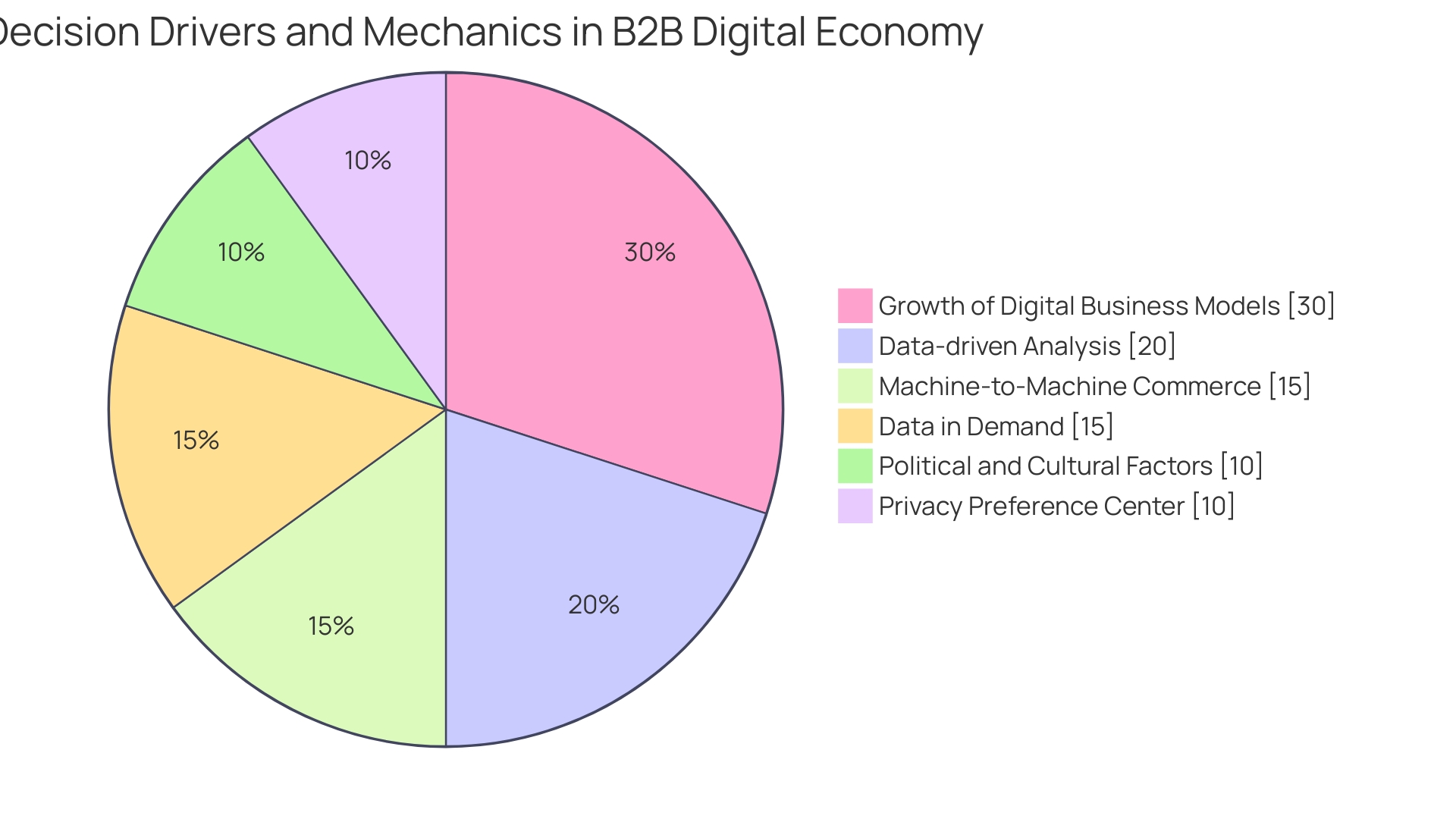
Choosing the Right Content Formats
Optimizing the user experience on a B2B e-commerce platform through engaging, informative content is not just a matter of choice; it's a strategic necessity that influences customer engagement and conversion. Injecting life into technical data and transforming complex information into visually compelling formats is a technique well-exemplified by Nets, a digital payment solutions provider. Their instructional designer, Karmela Peček, tackled the challenge of making dense information accessible by converting traditional formats into interactive, user-driven learning experiences.
Harnessing the power of content requires a deep dive into audience understanding. The creation of detailed buyer personas—profiles that go beyond job titles to encompass behavioral patterns and decision-making processes—is essential for delivering content that resonates. Whether it's a white paper's in-depth analysis or the immediate insights from a blog post, understanding format preferences plays a crucial role in content engagement.
Furthermore, content marketing in the B2B sector is an extensive endeavor, covering everything from articles to podcasts and even rigorous whitepapers. Content must be educational and relevant throughout the customer journey, from initial discovery to the point of purchase. A July 2023 survey of marketers revealed that a well-executed content strategy could drive up to 30% of total web traffic.
This emphasizes the role of content not only in acquisition but across the customer lifecycle—retention and referrals included.
Indeed, conversion rate optimization (CRO) benefits greatly from targeted, user-friendly content, as it's a fundamental strategy for improving ROI on marketing spend. By enhancing site effectiveness, businesses not only work towards increasing conversions from their traffic but also towards nurturing repeat customers to elevate lifetime value. B2B enterprises need to distribute their high-quality, carefully researched content across all channels where their customers are present, ensuring that it is readily available to influence and guide their buying decisions.
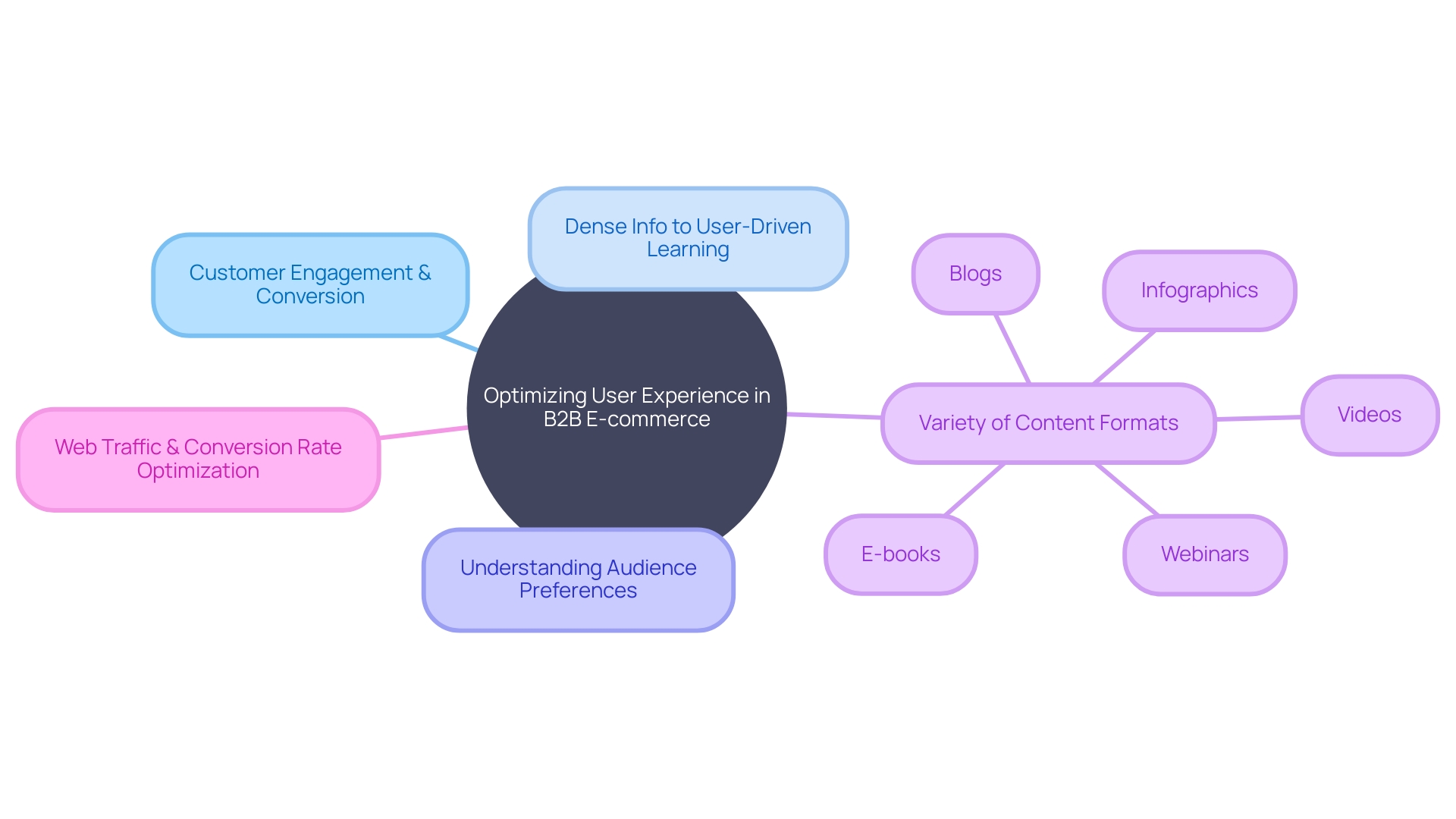
Selecting Content Channels
Crafting an effective distribution strategy is critical for reaching and engaging your target audience. It’s essential to understand where your potential customers are congregating and how they discover your products or services. Whether they’re scrolling through social media, searching online, receiving industry recommendations, or encountering partner sales, each channel plays a pivotal role in drawing customers to your B2B e-commerce platform.
As you pinpoint the channels where brand awareness is highest, you can tailor your efforts to maximize impact in these areas.
For instance, by tracking trends and listening to customer priorities, companies can identify key topics—like sleep health—and create content that directly addresses those interests. It’s not only about what businesses want to convey, but also about what audiences seek to understand. This strategy is well illustrated by campaigns such as Volvo Penta’s initiative to captivate boating enthusiasts by showcasing fresh, inviting lifestyle visuals.
Moreover, diverse levels of distribution—from direct, zero-level channels to more complex, multi-tiered channels involving distributors and retailers—demand a nuanced approach. Each channel requires strategic selection and the nurturing of partnerships to fructify. Taking insights from successful implementations like Avnet’s Design Hub or Amazon India’s Great Indian Festival can provide valuable lessons in creating online environments that cater to the needs of today’s engineers or festive shoppers, respectively.
Ultimately, an adeptly orchestrated content dissemination strategy will not just capture visibility but will also contribute to the prosperity and expansion of your business operations.
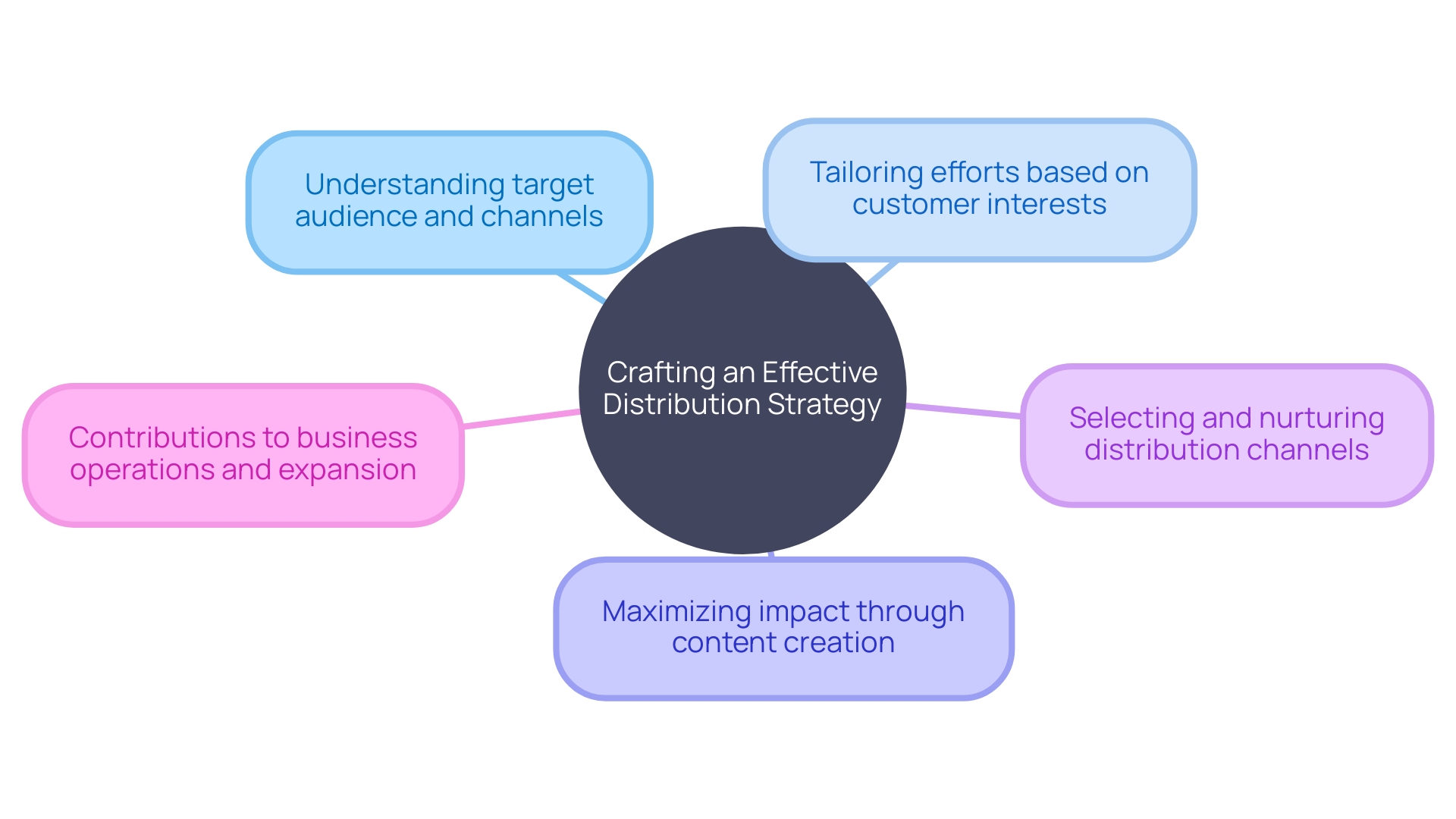
Budgeting for Content Creation
Allocating funds diligently for B2B e-commerce content creation is pivotal for generating content that truly engages and influences the target audience. A well-defined budget doesn't just support hiring adept professionals like copywriters, designers, and videographers, but also delineates the scope and caliber of content production. With judicious planning, businesses can earmark appropriate sums for diverse content activities, including creation, editing, design, and promotion, ensuring a direct impact on the content's quality and quantity.
Companies must be strategic with their content budgeting to comfortably cover a variety of content types, from basic blog posts and social media updates on a shoestring budget to immersive videos and interactive infographics when resources are more abundant. Designing a multi-tiered content strategy—anchored by a detailed content calendar—guides not just the 'what' and 'when' of content creation but also secures the 'how' by framing financial boundaries.
By interweaving strategic budget planning with proven content marketing techniques, organizations establish themselves as authoritative voices in their industry. Through well-researched articles and white papers, companies attain thought leadership and gain the trust of their B2B clientele. This is underscored by studies revealing that compelling content drives nearly a quarter of web traffic, underscoring the immense potential of strategic content in shaping customer journeys—from acquisition to referrals.
Armed with a content strategy aligned with the fiscal framework, businesses are positioned to thrive in the dynamic B2B digital landscape, leveraging content not simply as a marketing tool but as a cornerstone in fostering robust customer relationships and business growth. That being the case, setting realistic, data-backed goals for content plans remains crucial. Every cent allocated to content creation stands to propel your organization closer to achieving its overarching objectives and leaving a lasting imprint in its market sector.
Creating a Content Publishing Schedule
A robust content management strategy is the backbone of any successful B2B e-commerce platform, as it meshes organization with the constant flow of high-quality, valuable content. Central to a smooth content delivery system is a content calendar, which isn't only about consistency, but also about being strategic with the publishing schedule. This entails aligning with customer behaviors, seasonal peaks, and market trends.
To illustrate, the distributed team at Buffer skillfully utilizes a content calendar to coordinate publishing across different time zones, ensuring they add value and maintain their brand voice consistently. Similar discipline can be observed in full-stack content marketing, where day-to-day responsibilities require swift shifting between various tasks. This approach ensures a steady presence online, engaging your audience methodically.
Effective content management transcends mere scheduling; it integrates deep insights into customer personas, harnessing the power of detailed whitepapers and thought leadership to cement your brand as an authority. Consider Andrei from A1 SolarStore, who invests time to craft engaging content—his efforts underscore the significance of quality in commanding customer attention. A content management strategy bolsters your brand’s digital ubiquity, catering to the self-guided research tendencies of contemporary B2B customers.
They no longer navigate a linear path to purchase but seek out content across a multitude of channels.
Research underpins the importance of this strategy: a high-quality content strategy accounts for nearly 30% of the total web traffic, transcending blogs to encompass a full suite of formats. By centralizing your workflow via a CMS, your content not only attracts but also retains customers, propelling them through every stage of the sales funnel. With over a quarter of web traffic driven by content, it becomes clear that a meticulously planned content strategy is more than a luxury—it's an essential component of digital B2B engagement.
Content Creation and Distribution
Leveraging the power of AI and machine learning in content creation and distribution stands as a transformative competency for B2B e-commerce platforms. Prudent deployment of these advanced technologies is essential for crafting content that resonates deeply with specific audiences while aligning with business objectives. Beyond mere product write-ups and blog posts, diversifying into social media and email newsletters is vital to captivate customer attention.
The ability to atomize knowledge from subject matter experts into potent market-facing content allows businesses to confront the intricate sales process where decision-makers weigh what they've learned against peer insights.
According to eMarketer, digital innovation, particularly AI, is not an option but a necessity for companies staying ahead in the B2B digital economy, with adoption rates soaring. In the era where AI is 'officially everywhere'—boosting efficiency, offering unmatched personalization, and achieving scalability—it is now a staple of competitive edge. A staggering 95.8% of marketers report using AI daily across various departments according to proprietary data, underpinning the significant cross-sectional impact it has on company operations.
Further illuminating the significance of AI, industry analysis emphasizes the accelerated adoption and potential for AI-driven commerce to revolutionize the B2B digital economy. The insights from experts in highly personalized fields posit that if AI-generated content can thrive in niches that traditionally resist artificiality, its potential is boundless. This is underscored by the MarTech Editor's emphasis on the rising importance of AI in our lexicon and everyday processes, denoting a growing cultural and functional impact on business practices.
Therefore, creating a content strategy that capitalizes on Ai's strengths is more than a wise move—it's an essential step to ensure relevancy in the rapidly evolving technological landscape.
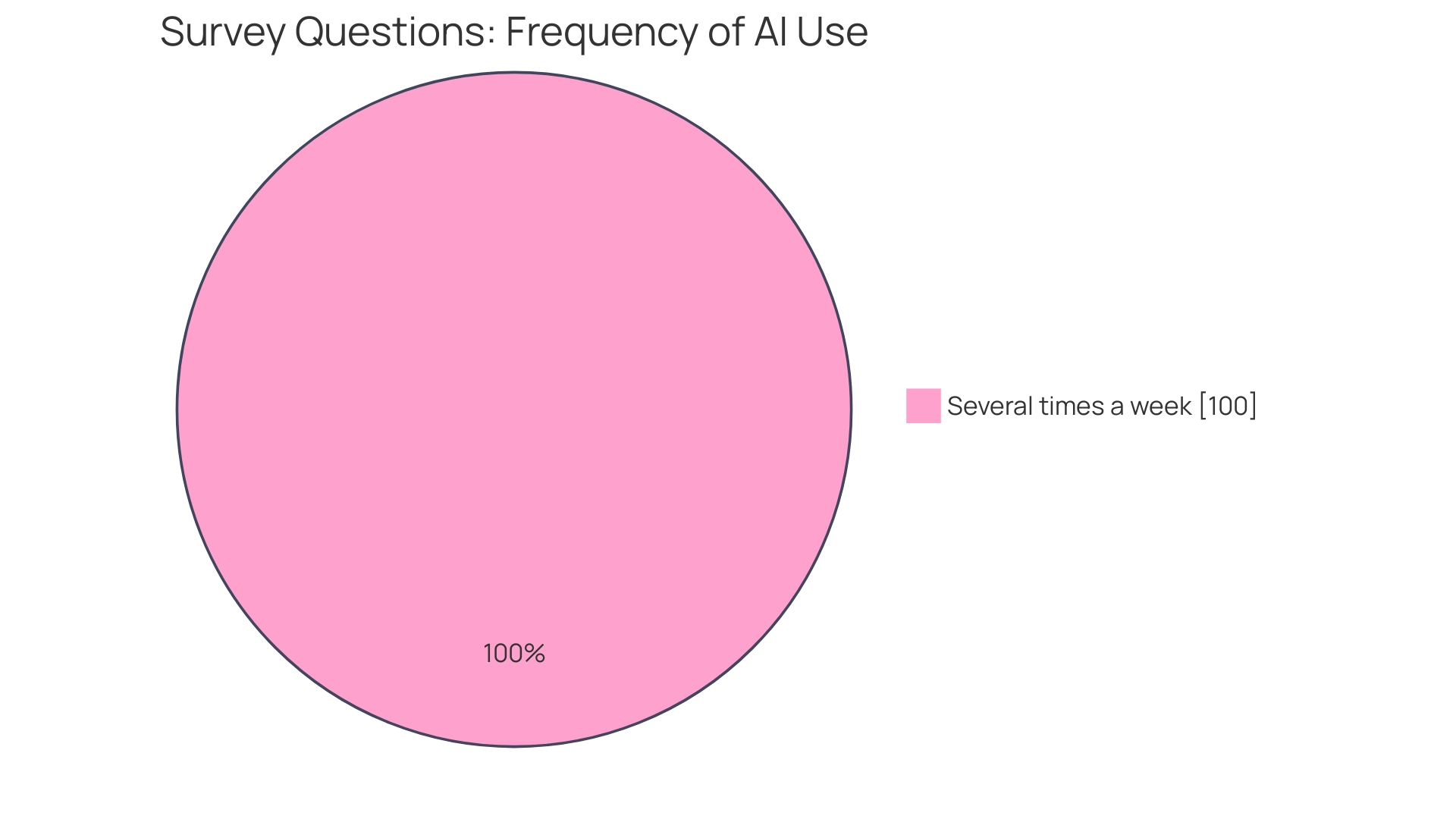
Analyzing and Measuring Results
To optimize the growth of a B2B e-commerce platform, regular analysis, and measurement of outcomes are critical. By leveraging data analytics, businesses can dissect customer behavior and gauge the efficacy of content and platform performance. Case in point, Lemonaid Health, a telehealth provider, faced challenges in their growth due to an overly complex and inefficient media strategy.
By conducting a targeted analysis, they were able to pinpoint inefficiencies and reallocate their media budget more effectively, avoiding over-reliance on paid search and embracing a more diverse channel strategy.
Moreover, as demonstrated by market leaders who use tailored business intelligence (BI) tools, the integration of such custom analytics software can lead to more informed decision-making. These tools have the capability to sift through multitudes of data, offering actionable insights through user-friendly reports and dashboards.
Understanding that the offerings of a business are its cornerstone, one must continuously assess market demand using tools like Google Trends and closely monitor the competitive landscape. Elevating this approach with predictions and analytics supported by the industry's digital economy statistics ensures that every decision is made on a foundation of solid evidence. This strategic utilization of BI tools and data analytics ensures that B2B e-commerce platforms can not only identify areas for improvement but be poised to adapt swiftly to the ever-changing digital marketplace for sustained business advancement.
Conclusion
In conclusion, understanding key elements of B2B e-commerce is crucial for businesses in the digital trade landscape. Customized development and leveraging AI are essential for growth and success.
Identifying the target audience and setting SMART goals are vital for personalized experiences and focused objectives. Monitoring KPIs enables data-driven decision-making and improved performance.
Choosing the right content formats and channels enhances user experiences and engagement. Allocating budget for content creation ensures quality production. A robust content management strategy with a publishing schedule drives consistency and brand authority.
Leveraging AI in content creation and distribution transforms businesses, enhancing efficiency and personalization. Regular analysis and measurement of outcomes drive optimization and adaptation.
By following these strategies, businesses can position themselves for success in the dynamic B2B digital landscape. Understanding the target audience, setting SMART goals, and leveraging AI are all essential components of thriving in digital trade.





